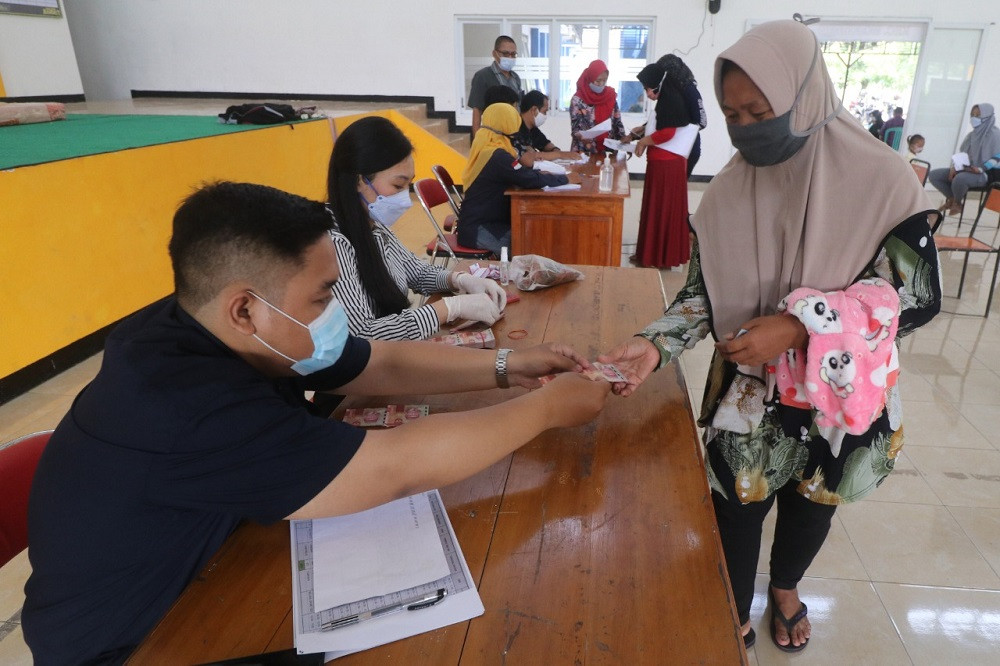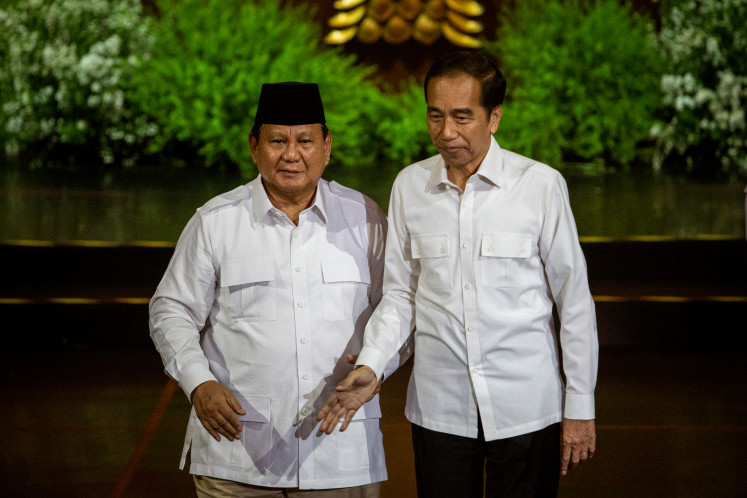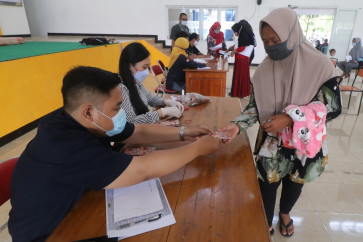Popular Reads
Top Results
Can't find what you're looking for?
View all search resultsPopular Reads
Top Results
Can't find what you're looking for?
View all search resultsRealizing financial inclusion for the world’s poorest
These women only used their accounts to withdraw cash from the Social Affairs Ministry without using, or even knowing, any other basic banking services.
Change text size
Gift Premium Articles
to Anyone
 Cash transfer: Residents of Banjarmlati subdistrict in the East Java city of Kediri receive Rp 200,000 (US$14) in direct cash assistance each on May 4. The local administration distributes the aid to increase people’s purchasing power amid the pandemic-induced economic crisis. (Antara/Prasetia Fauzani)
Cash transfer: Residents of Banjarmlati subdistrict in the East Java city of Kediri receive Rp 200,000 (US$14) in direct cash assistance each on May 4. The local administration distributes the aid to increase people’s purchasing power amid the pandemic-induced economic crisis. (Antara/Prasetia Fauzani)
A
pproaching its third decade, the Family Hope Program (FHP) is one of Indonesia's main social assistance policies, and in recent years its government-to-person (G2P) disbursement process has been digitized for the 10 million poorest females in Indonesia. This digitized G2P payment is an initiative made under the administration of President Joko “Jokowi” Widodo in 2017, based on the mission of turning all Indonesians into a banked population.
Before digitization, since 2007 the FHP had been Indonesia's conditional cash transfer program whose series of programs comprising: G2P cash payments via the post office; top-down monitoring regarding the use of G2P cash, executed by facilitators employed by the Social Affairs Ministry (for example for pregnant women, the G2P cash must be allocated to pay for routine pregnancy check-ups); family development session (FDS), educational sessions about proper financial planning and family development and the ultra-poor graduation program.
Given the complexity of Indonesia's demographic, geographical and cultural conditions, digitizing the FHP disbursement in 2017 was considered a very bold step for Indonesia.
Although considered bold, the goal of digitizing Indonesia's FHP has drawn a lot of debate regarding the readiness of program executors, infrastructure or the readiness of its G2P beneficiaries.
In accordance with the general promise of digitizing G2P payments, the initial target was that the extremely marginalized population would be incorporated into the formal banking system where access to microfinance would be easier.
By incorporating 10 million poor women into microfinance services, they were expected to be able to access microloans, microinsurance, safe savings and transfer activities, empowered to start small-medium businesses and ultimately break the chain of poverty, rather than merely being passive beneficiaries.
However, unfortunately, research from Women's World Banking in 2020 found that although the G2P payments technical implementation was considered a success, the initial objective of digitizing this program had not been achieved because 94 percent of the 10 million poor women were dormant bank account users.

















